By Dan Weisz
Recently during these scorching summer days, we have had a bobcat finding respite in the shade of our front porch. This is just one of many shady spots this cat has but it has been a treat to know we are part of his regular routine. I was able to sneak out the garage and quietly take some photos without disturbing him.
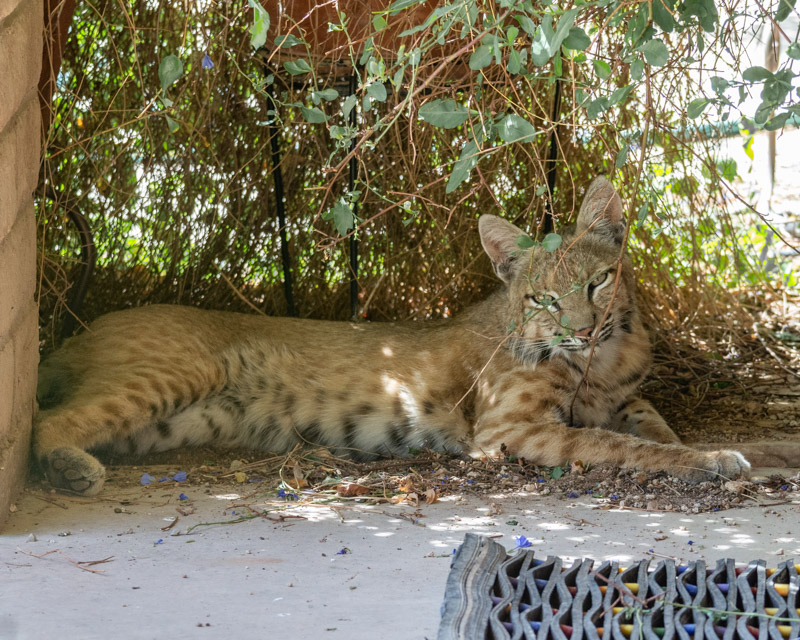
Bobcat colors range but are generally orange-ish brown with black spots and bars on its legs and chest. They have long fur on their cheek area seen in the photo below. You can listen to the sounds of a bobcat here: Bobcat
It doesn’t really purr like a kitty.
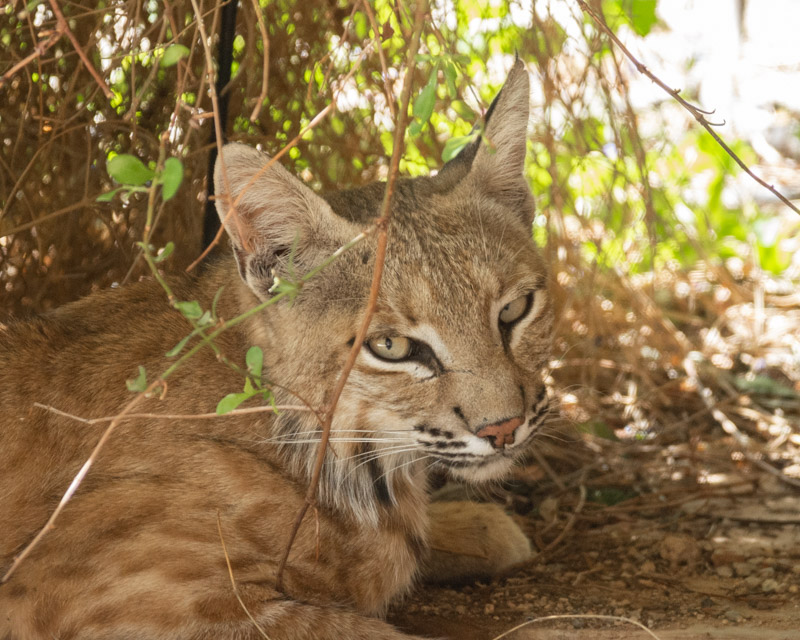
This is my favorite shot- he looks like an official greeter at my front door. Bobcats are carnivores and their food of choice is rabbits, but they will also eat birds, lizards, rodents, snakes, and carrion. In this photo, he must have enjoyed watching the cottontails out in the front yard. Although I don’t believe he was a hunting from here, bobcats will ambush their prey by waiting motionless and then pouncing on it. Check out those big paws.
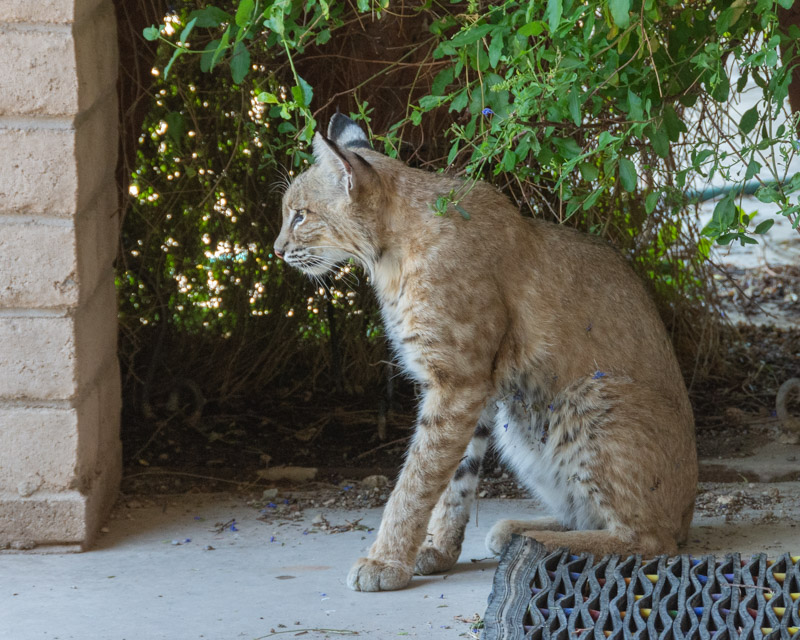
Roadrunners are another iconic creature of the desert. Here are some looks of a Roadrunner at Sweetwater Wetlands
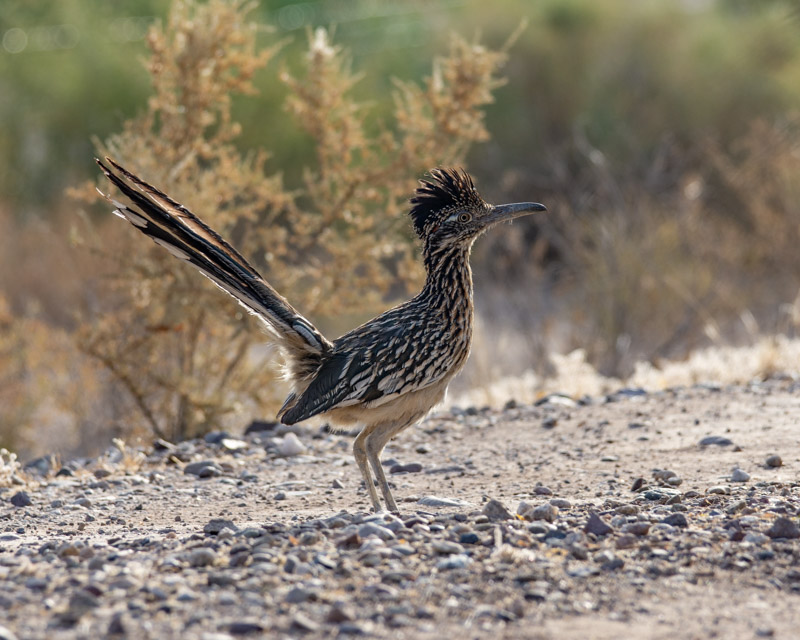
Roadrunners are very unafraid of humans and are curious and intelligent creatures. They will raise and lower their crest, flip their tail about, and just look and act very expressively. Roadrunners are members of the Cuckoo family. Maybe that’s why they act so zany. At times, a blue and orange patch of bare skin is visible behind their eyes.
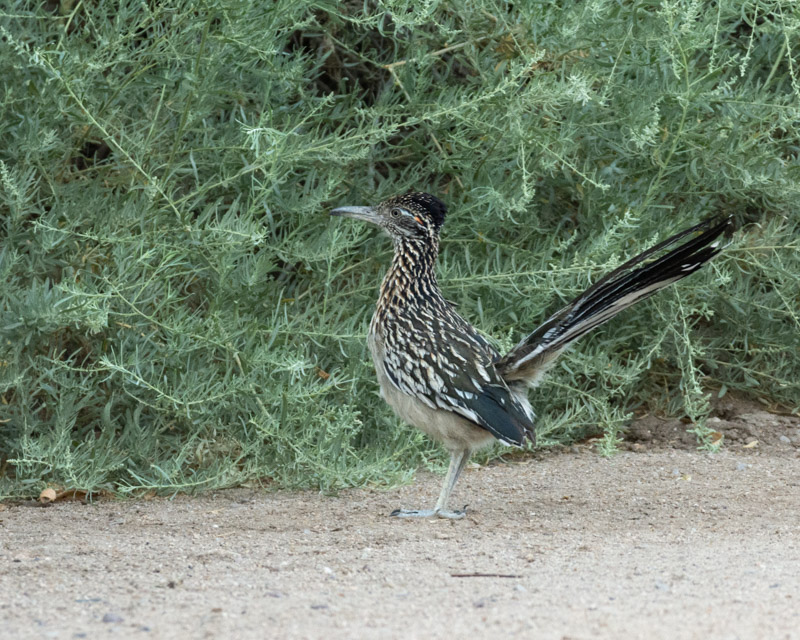
Unlike most birds which have three toes pointing forward and one backward, roadrunners are zygodactyl- they have 2 toes pointing forward and 2 toes pointing backwards. Roadrunners can run as fast as 15 miles per hour and are excellent hunters, eating any animal small enough for it to kill and ingest.
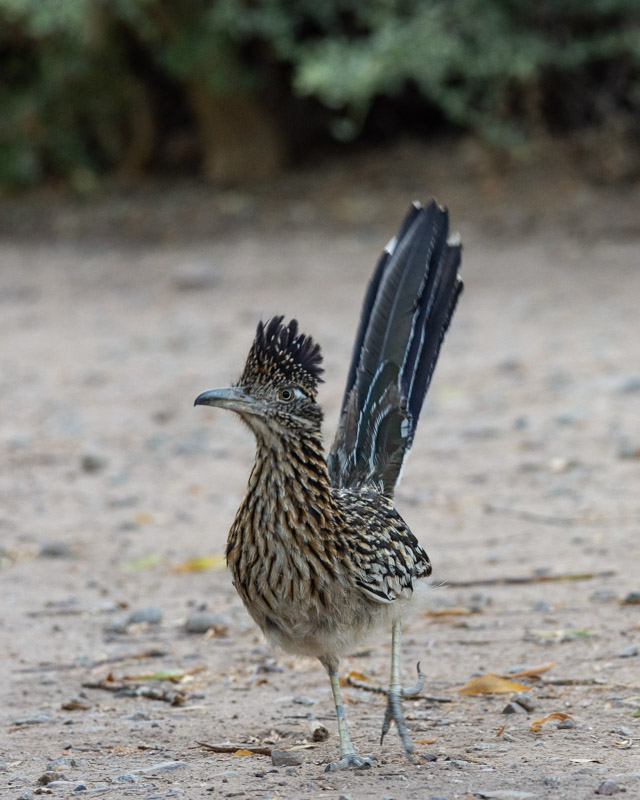
For more on the roadrunner, listen to this Birdnote episode: Birdnote
Finally, look at a few hummingbirds seen at the feeders at the Santa Rita Lodge in Madera Canyon one morning. Black-chinned Hummingbirds have a black throat that contrasts strongly with its white, upper breast. This makes it look as if it is wearing a collar.
Black-chins weigh more than a penny but less than a nickel and are a bit over three inches long.
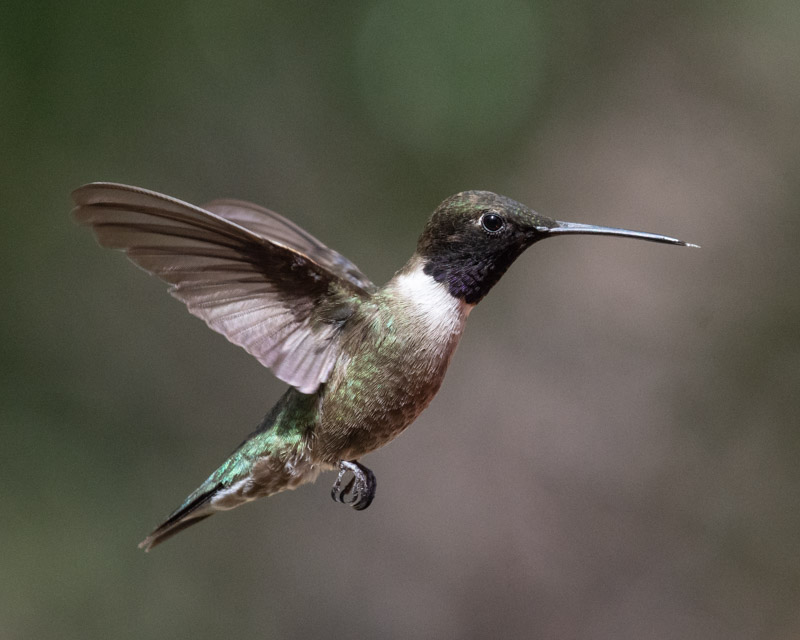
In good sunlight, the bottom of that black throat iridesces violet. Black-chinned hummingbirds winter in Mexico and come ’north’ to our area for the summer.
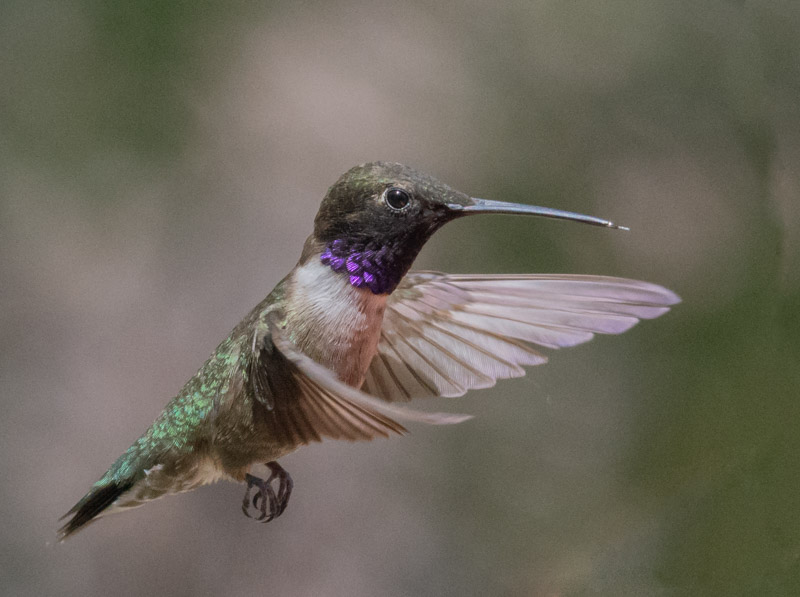
Female blacks-chins lack the throat color and are much lighter on their backs than their male counterparts.
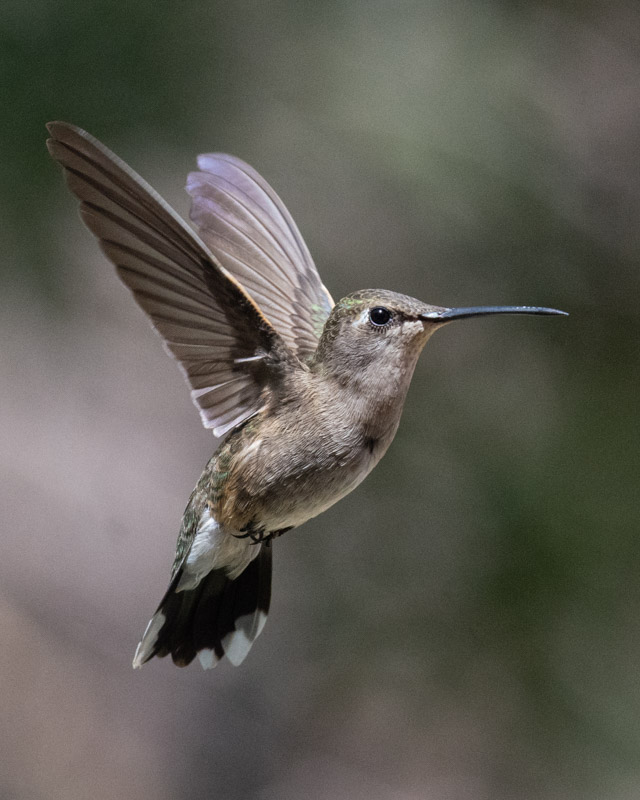
Broad-billed hummingbirds look very dark in poor light but, in good light, they look spectacular! That broad, orange bill against the brilliant blue throat give these birds a dazzling look.
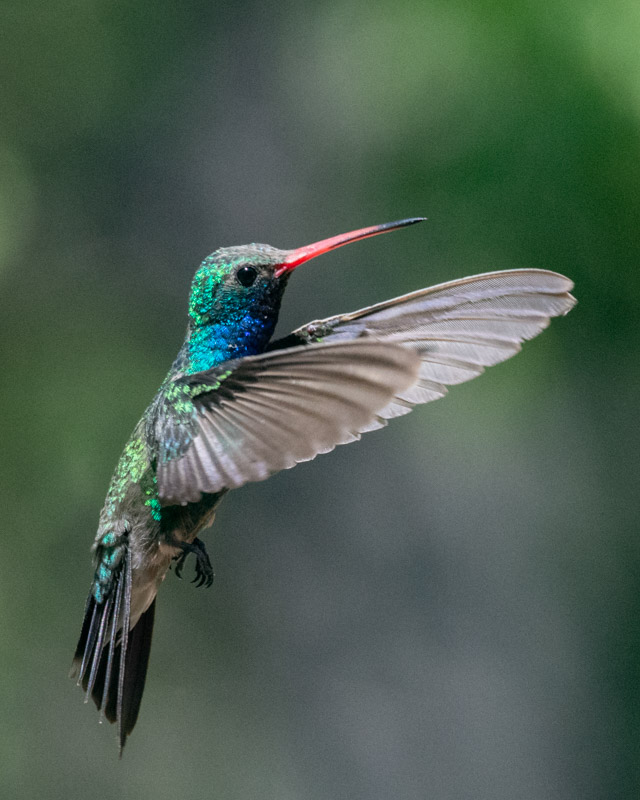
Here is what they sound like: Hummingbirds
